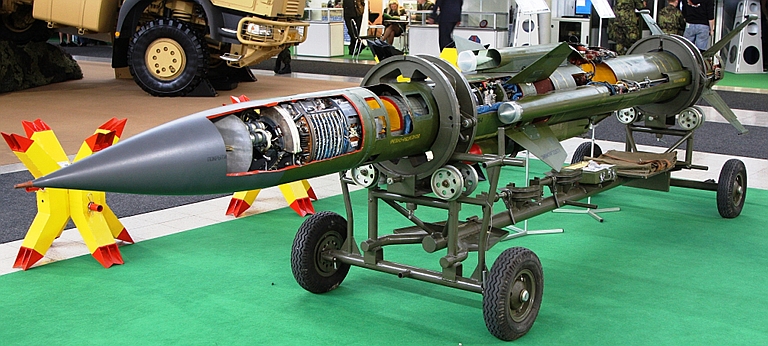Pentagon Releases Damning Report of F-35 Flaws
Deficiencies Not Resolved, More Arise
Discovery of problems, as indicated by the rate of new deficiency reports and the number
of open deficiencies, is an indicator of overall system immaturity. As of July 9, 2012, the
program had 28 open category 1 (i.e., safety of flight related) deficiency reports related to the
F-35A air vehicle, propulsion system, and associated support systems that were relevant to the
OUE. DOT&E recommended that six of these deficiencies be fully resolved, not just waived,
prior to the OUE start.5 By the end of October, only 2 of the 28 – and only 1 of the 6 –
deficiencies had been fully resolved. Additionally, since July, the program has identified 8 new
category 1 deficiencies, which DOT&E considers relevant to continued flight operations with
early production aircraft at Eglin and elsewhere.
Radar Shortfalls Abound
The radar performance shortfalls ranged from the radar being completely inoperative on two sorties
to failing to display targets on one sortie, inexplicably dropping targets on another sortie, and
taking excessive time to develop a track on near co-speed targets on yet another sortie. In two
instances, a student pilot cited the need to use head-down actions to see the displayed altitude of
airborne targets.
HMD Headache for Pilots
The helmet-mounted display (HMD) presented frequent problems for the pilots. All four student pilots
and one of the five instructor pilots identified a problem with the HMD on at least one of their training flights.
Problems cited in the survey comments included misalignment of the virtual horizon display with the actual
horizon, inoperative or flickering displays, and focal problems – where the pilot would have
either blurry or "double vision" in the display. The pilots also mentioned problems with
stability, jitter, latency, and brightness of the presentation in the helmet display...Pilots also commented on the
usability of the HMD, comparing it to the heads-up display in other aircraft; one citing that the
HMD is too large of a presentation causing the heading display to be overlaid on the canopy
bow [and hence hard to see], and another citing the lack of HMD data when looking off to the
side of the aircraft, such as during traffic pattern operations.
Poor Interface Design Increases Workload
Deficiencies in the design of the pilot's communication and navigation controls causes
increased workload. Cited by one of the instructor pilots during the OUE and by test pilots in
other venues, the touch screen used to control the radios is not readily accessible, requires more
channelized attention, has no tactile feedback, and is error prone – particularly during demanding
phases of flight or under turbulent flight conditions.
Horrible Visibility Issues
All four student pilots commented on the out-of-cockpit visibility of the F-35, an issue
which not only adversely affects training, but safety and survivability as well.8
One rated the degree to which the visibility deficiencies impeded or degraded training effectiveness as
"Moderate;" the other three rated it as "High" or "Very High." The majority of responses cited poor visibility;
the ejection seat headrest and the canopy bow were identified as causal
factors. "High glare shield" and the HMD cable were also cited as sources of the problem. Of
these, only the HMD cable has the potential to be readily redesigned.
In three cases, student pilots explicitly cited visibility-related impacts that could be
directly applicable to the Block 1A syllabus (a largely benign visual search environment);
several other implicitly did so. One student pilot commented, "Difficult to see [other aircraft in
the visual traffic] pattern due to canopy bow." Another stated, "Staying visual with wingman
during tactical formation maneuvering a little tougher than legacy due to reduced rearward
visibility from cockpit."
Three student pilot comments predicted severe impacts of the visibility shortfalls in
combat or in training of a more tactical nature. One said, "A pilot will find it nearly impossible
to check [their six o'clock position] under g." Another commented, "The head rest is too large
and will impede aft visibility and survivability during surface and air engagements," and,
"Aft
visibility will get the pilot gunned every time," referring to close-range visual combat
Aft visibility could turn out to be a significant problem for all F-35 pilots in the future,
especially in more tactical phases of combat training than were conducted in the OUE, such as
basic fighter maneuvering (BFM) and air combat maneuvering (ACM), and possibly in tactical
formation as well. It remains to be seen whether or not, in these more advanced aspects of
training, the visibility issues will rise to the level of safety issues, or if, instead, the visibility
limitations are something that pilots adapt to over time and with more experience. Unlike legacy
aircraft such as the F-15, F-16, and F/A-18, enhanced cockpit visibility was not designed into the
F-35. There is no simple relief to limitations of the F-35 cockpit visibility.
Pilots Overheat
F-35 pilots are fitted with and required to wear a jacket on every flight as part of their
flight equipment, which works with the escape system and personal flotation devices. Three of
the four student pilots and one instructor pilot commented on thermal burden created by the
jacket in their survey comments. The discomfort to the pilots due to excessively hot pilot's flight
equipment (PFE) did not significantly hamper the execution of the OUE, but the outdoor
temperatures during the evaluation were nowhere near the maximums experienced during the
summer months at Eglin AFB or at other training sites, such as Marine Corps Air Station
(MCAS) Yuma, Arizona, where the first operational F-35B unit is located. While the thermal
loading of the PFE was tolerable during the OUE time period, it may very well turn out to more
significantly hamper training at hotter times of the year.
http://pogoarchives.org/straus/ote-info-memo-20130215.pdf









